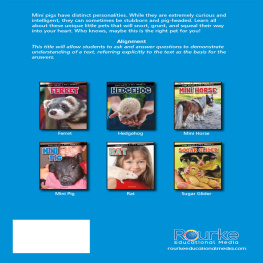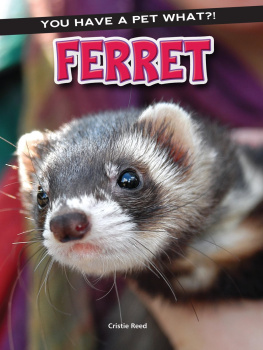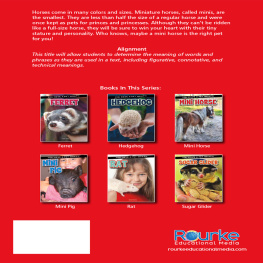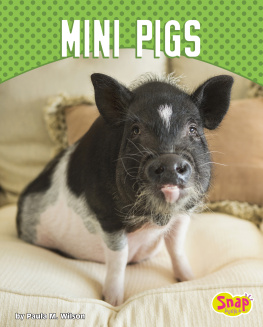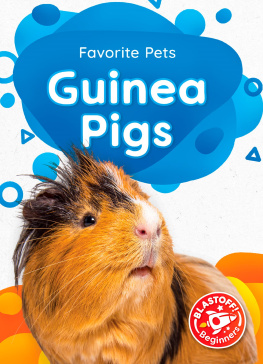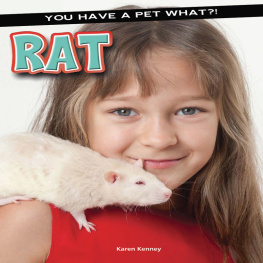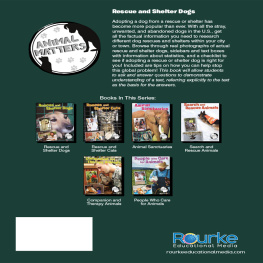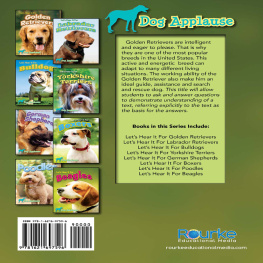Table of Contents
Guide

2016 Rourke Educational Media
All rights reserved. No part of this book may be reproduced or utilized in any form or by any means, electronic or mechanical including photocopying, recording, or by any information storage and retrieval system without permission in writing from the publisher.
www.rourkeeducationalmedia.com
PHOTO CREDITS: : notelaurens
Edited by: Keli Sipperley
Cover design and Interior design by: Rhea Magaro
Library of Congress PCN Data
Mini Pig/Cristie Reed (You Have a Pet What?!) ISBN 978-1-63430-431-3 (hard cover) ISBN 978-1-63430-531-0 (soft cover) ISBN 978-1-63430-620-1 (e-Book) Library of Congress Control Number: 2015931851 Printed in the United States of America, North Mankato, Minnesota | Also Available as: 
|
Meet the Mini
When you come home to a dog or cat you are greeted by barks, meows, and wagging tails. Keep the wagging tails and substitute snorts, grunts, or squeals that is the happy greeting you receive when you come home to a mini pig.
Miniature, potbellied, micro, pocket, and teacup are names for a type of dwarf

Pigs are fast learners. A scientist once taught pigs to play video games!
and the size of their parents, they may grow larger or smaller. Their typical lifespan is 10 to 15 years. Some mini pig breeds can live longer.
FUN FACT
A full-grown mini pigs weight is compact. A 100 pound (45 kilogram) pig may be the same size as a 50 pound (23 kilogram) dog.

The Gttigen mini pig was first developed in Europe for medical research.
and digging. On each foot they have a hoof. Their tails can be curly, straight, or kinked.

Mini pigs have some distinctive characteristics. They will never grow as large as a typical farm pig. They may have a swayed back and an oversized belly that makes them look like theyve eaten too much. Their legs are usually short, which makes their bellies nearly touch the ground.
FUN FACT
Pigs are cloven-hoofed, which means their hoof is split into two toes. They walk on two front toes and have two back toes called dewclaws.

Many Breeds of Mini Pigs

Once Upon A Time
Mini pigs have existed on different continents around the world for hundreds of years. Ancestors of mini pigs were brought to North America by early settlers as a source of food. In Europe, mini pigs were bred for medical research before they became popular as pets.

pigs spread rapidly in the 1980s.

A young woman and her pet pig pose for a photo in the 1920s.
Going Whole Hog
Mini pigs have unique personalities. They can be quirky and lovable, but sometimes stubborn or pig-headed. They are extremely curious and very intelligent. They use their squeals, snorts, and grunts to show happiness and communicate their needs. When they want something, you will hear about it!

Pigs have excellent memories.
to use its thick, strong snout to root and dig. Wallowing on their backs and scratching with their hooves is also normal pig behavior. Pigs love to eat. Some clever pigs have learned to open refrigerators and cupboards to get a treat!

You can find tips and tricks for training your mini pig on the Internet.
animals. Mini pigs like lots of attention and enjoy the companionship of their humans and other pigs. They develop a strong and trusting bond with their owners. They run, jump, and play with children and other pets.
They like to give and receive affection. Mini pigs snuggle with their humans on the couch or curl up with them in bed. They are in hog heaven when they get a back rub or a belly scratch. They love a good bath.

FUN FACT
In the animal world, pigs are among the most intelligent creatures. Their intelligence ranks just behind apes, monkeys, whales, and dolphins.

A Pig-tionary
boar: a male pig
hog: a larger pig
litter: a group of piglets born to a sow
pettitoes: a tiny pigs feet
pig: common term for a younger animal
piggy: a sow late in her pregnancy
piggery: a place where pigs are kept
piglet: a baby pig from birth to eight weeks of age
runt: the smallest piglet in a litter
sow: a female pig
This Little Piggy
Mini piglets need to stay with their mother until they are eight weeks old. When they arrive in the home as pets, they need their own space. They will naturally be frightened and need time to get used to their new environment. Provide an area separate from humans and other pets. The piglet needs to feel safe and secure. This is how it can start to develop trust with its new family members.

A dog or cat bed will also work well for your mini pig.
To become a good pet, proper socialization is critical. It takes love, patience, and time to get to know your new pet. Gradually introduce yourself and other family members to the young pig. Some piglets are not fond of being picked up or held. They use their high-pitched squeal to let you know when they are afraid.

